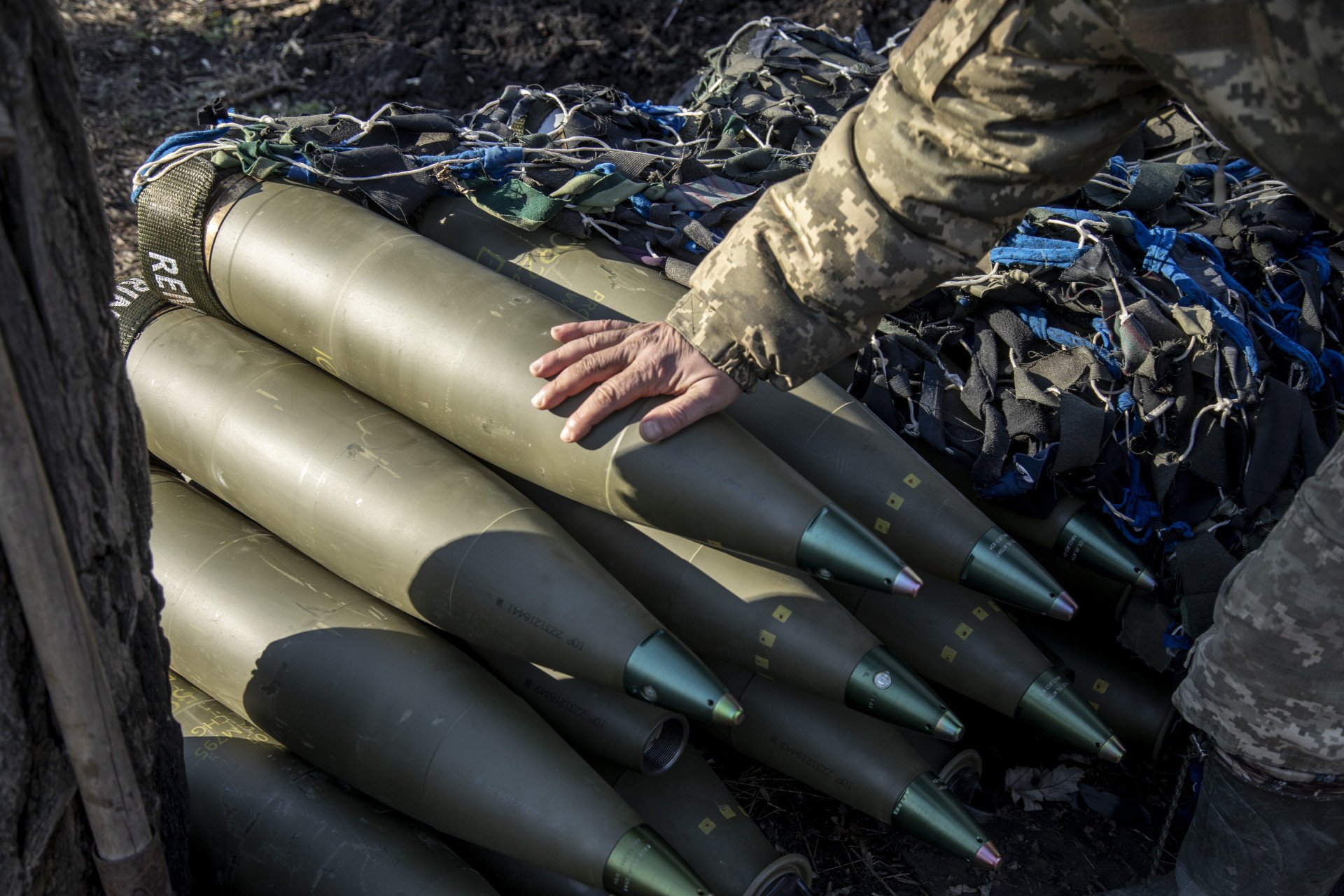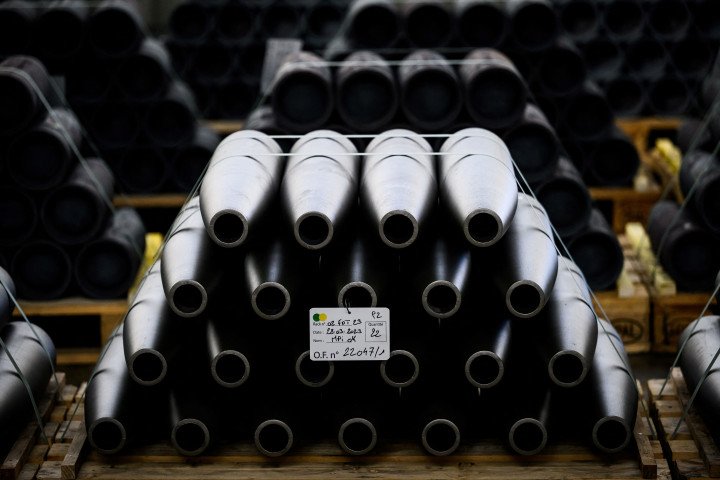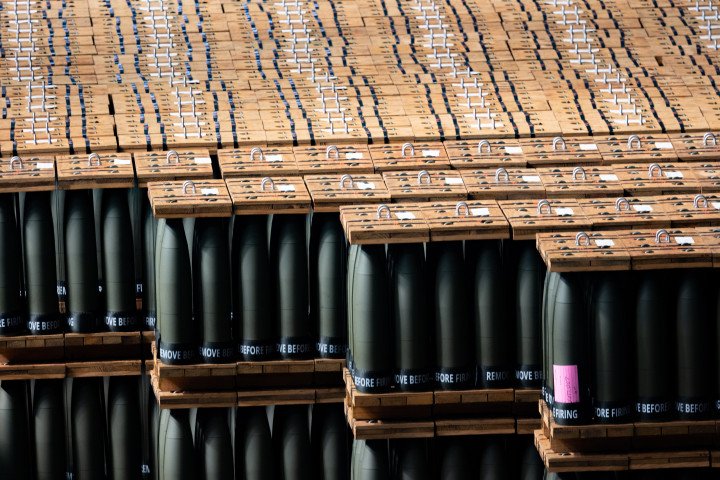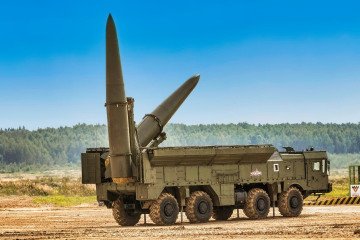- Category
- War in Ukraine
How Can the West Counter Russia’s Artillery Advantage?

Russia has ramped up artillery production since its full-scale invasion of Ukraine, outpacing Western allies in sheer volume. While NATO and Ukraine’s partners are working to also scale up its production, will it be enough to counter Moscow’s war machine?
Russia has “practically halved” its artillery ammo usage after successful strikes by Ukrainian forces on the Kremlin’s production lines and depots, Oleksandr Syrskyi, Ukraine's military commander-in-chief said during an interview with Ukrainian broadcaster, TSN, in January 2025.
A strike on a Russian depot destroyed 30,000 tons of ammunition in Russia’s town of Toropets, the UK's Defense Ministry reported in September 2024. At the time, it resulted in one of the largest losses of Russian and North Korean ammunition throughout the war.
Toropets reportedly held small arms rounds, mortar shells, artillery rockets, and long-range ballistic missiles potentially including Russian-made Iskanders and North Korean KN-23s, Forbes reported. Four days later, Ukraine again struck another ammunition depot Tikhoretsk, southern Russia, and destroyed 2,000 tonnes of ammunition.
What we are in now is a production war, the outcome in Ukraine depends on how each side is equipped to conduct this war.
How much artillery can Russia produce?
Russia is producing about 250,000 artillery munitions per month, or about 3 million a year. In 2024, Russia was firing around 10,000 shells a day, compared to just 2,000 a day from the Ukrainian side, a European intelligence official told CNN.
Russia recently passed a bill to increase its 2025 military budget by 25%, totaling $142 billion (13.2 trillion rubles)—a significant increase since the start of its full-scale invasion, from $59 billion in 2022 to $109 billion in 2023.
Russia’s defense expenditures have fluctuated between roughly 4% and 6% of its gross domestic product (GDP), significantly higher than the NATO average in recent decades the Hudson Institute reported.
Reports have claimed that the more likely figure for Russian artillery production is nearer 4.5 million. Moscow has likely exaggerated the numbers in many cases, but Russia has certainly scaled up its production since 2022.
Researchers at the Hudson Institute reported that Russia is producing artillery rounds around three times more quickly and at a lower cost than the United States and Europe combined.
How much artillery can the West produce?
In May 2021, just nine months before the full-scale invasion, the US Army requested permission to reduce spending on 155mm rounds by 50%.
To restore the supply chain, in 2024 the US Army requested $3.1 billion to ramp up the production of 155mm shells throughout 2025, but Congress doubled the amount to $6.414 billion, as part of the $95 billion supplemental security bill, signed by then-US President Joe Biden, in April 2024.

From 2023 to 2024, Ukraine increased its total domestic production of mortar and artillery ammunition—ranging from 60mm to 155mm calibers—from 1 million rounds to 2.5 million rounds annually (150% increase) US Department of Defense (DoD) reported.
If Putin triumphs in Ukraine, the next move of Russian forces could very well be a direct attack on a NATO ally.
46th US President Joe Biden
German defense giant Rheinmetall and Ukraine declared their intention to produce a six-digit number of 155mm rounds per year in a "Ukrainian Centre of Excellence for Ammunition" in February 2024. Rheinmetall aims to produce 1 million shells by 2027.
The US has invested $5.5 billion to expand the domestic production capacity of 155mm projectiles from 14,400 to 40,000 per month (a 178% increase).
Since Russia’s full-scale invasion of Ukraine, more than 40 nations and representatives from NATO and the EU regularly convene National Armaments Directors (NADs) under the auspices of the Ukraine Defense Contact Group (UDCG).

UDCG members are working on several areas to improve Ukraine’s defense including lower-cost missiles, identifying production constraints, and aiming for an increase or acceleration of 155mm artillery production. In January 2025 they announced examples of UDCG's ongoing production, expansion, and munitions delivery efforts;
France and Sweden will double the capacity of ammunition and explosives loading by 2025, double the capacity of modular charges by 2026, and tenfold the powder production capacity by 2026.
Germany, Spain, Hungary, South Africa, and Australia plan to increase production to up to 700,000 artillery shells and up to 10,000 tons of gunpowder per year by 2025.
Through the Act in Support of Ammunition Production (ASAP), the European defense industry is expected to increase its annual ammunition shell production capacity to 2 million by the end of 2025. The initiative includes 31 projects across five key areas: explosives, powder, shells, missiles, and testing and reconditioning certification.
Norway will invest more than NOK 1 billion, almost $90 million, to significantly expand artillery production for at least 15 years.
How can Ukraine’s Allies combat Russia’s artillery production?
By the end of 2025, the US and its NATO Allies could produce nearly 2 million rounds per year for Ukraine—a huge increase. However, Russia’s overall annual artillery shell production is at 3 million, a third more than Ukraine’s Allies.
“The West runs a defense industry built for peacetime,” the Hudson Institute reported. “War games have shown that if a large-scale conflict were to erupt in Europe, the UK would exhaust its existing arsenal in a little over one week. Germany would be out of ammunition in a few days—or, in a war with a quick operational tempo, in a few hours.”

The last three years have underlined the critical importance of technological innovation as Ukraine seeks to overcome advantages in Russia’s greater material resources. Since Russia’s full-scale invasion began, Ukraine has had a rapidly expanding ecosystem of domestic defense tech companies. “The Russian army in Ukraine has already been confronted by numerous examples of game-changing tools developed by Ukrainian defense tech talent,” Nataliia Kushnerska the Head of Ukraine’s Brave1 defense tech cluster said. “It is vital that this trend continues.”
Ukraine’s domestic missile program and production advanced at speed throughout 2024. Producing missiles and artillery domestically allows Ukraine to strike Russian military targets where Western Allies may be reluctant to do so and also lessens its reliance on often disrupted and delayed deliveries.
In 2025, Russia may be surprised to learn exactly how far Ukraine’s domestic missile production has advanced.
Nataliia Kushnerska
Head of Ukraine’s Brave1 defense tech cluster
Though Russia’s production is greater than the West’s, as Syrskyi recently stated, Russian forces' use of artillery has drastically reduced, proving that successful strikes against their production depots have seen military gains for Ukraine on the frontline. Continuing these attacks using domestic and Western long-range weapons against Russia’s military assets, production, and storage depots will ultimately eliminate the production issues at the core.
-46f6afa2f66d31ff3df8ea1a8f5524ec.jpg)
-c42261175cd1ec4a358bec039722d44f.jpg)
-6359eca46c72bde40a90abaaadd6eaa8.png)
-29a1a43aba23f9bb779a1ac8b98d2121.jpeg)


-206008aed5f329e86c52788e3e423f23.jpg)